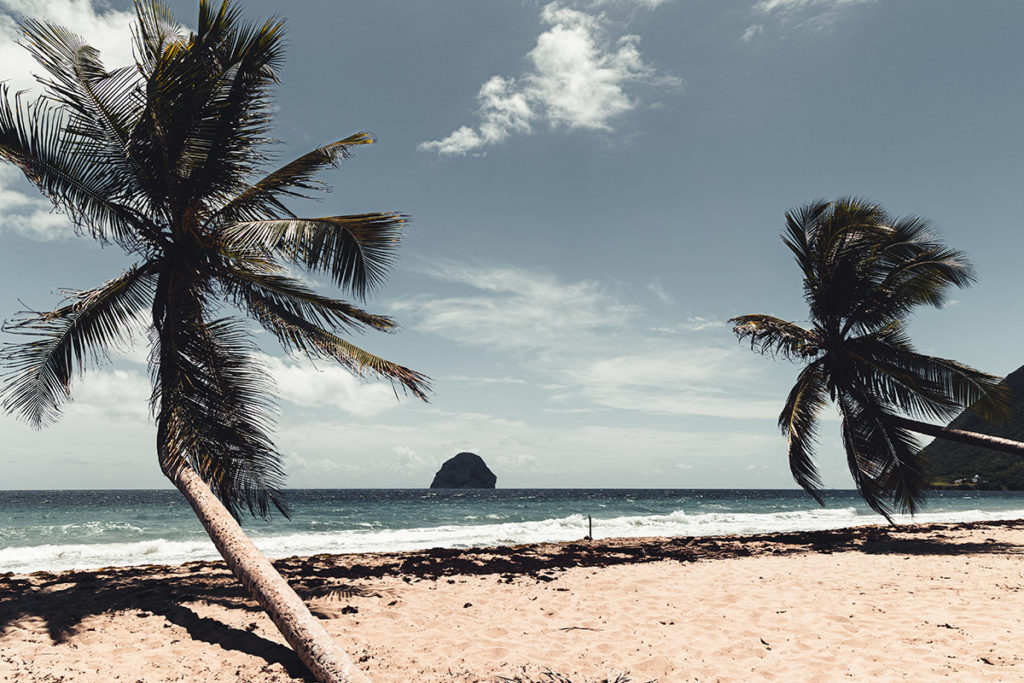Being in Martinique, you should certainly not miss Le Diamant, coming from the north at some point you can see rising almost straight up out of the sea, three kilometres off the south coast, the Diamond Rock. The Diamond Rock is the most recognizable natural "monument" of Martinique.
The basalt island is the result of a volcanic eruption and rises 175 metres above the water surface. Today it is uninhabited, but during the Napoleonic Wars it was a military base. In 1804, the British dropped sailors on the volcanic island and registered the rock as a ship, the HMS Diamond Rock. After 17 months of unsuccessful attacks, the French used a creative strategy to overpower the sailors and retake the rock.

It is now a destination for scuba diving enthusiasts. The village of Le Diamant is tiny, so it's worth strolling a few streets and visiting the tiny baroque church of St Thomas (1829), renovated in 1983 in the style of an overturned ship's hull and listed as a historical monument. Archaeologists in La Diamant have discovered traces of pre-Columbian settlement dating back to the 4th century. Settlers moved in towards the end of the 17th century. The beach at Le Diamant is one of the widest and longest on the island, and the waves here can give you a good scare.
While you are admiring Diamond Rock from the coast, you should also visit Anse Cafard and the nearby Slave Memorial - Monument aux esclaves. Monumental statues symbolise the slaves who lived on the island in ancient times and recall the tragedy that took place nearby. A ship full of unfortunate people transported to the island as new slaves in 1830 crashed on a rocky shore. Dozens of people trapped inside drowned in the tragedy. It is in their memory, and in memory of many other slaves, that this monument was built.


